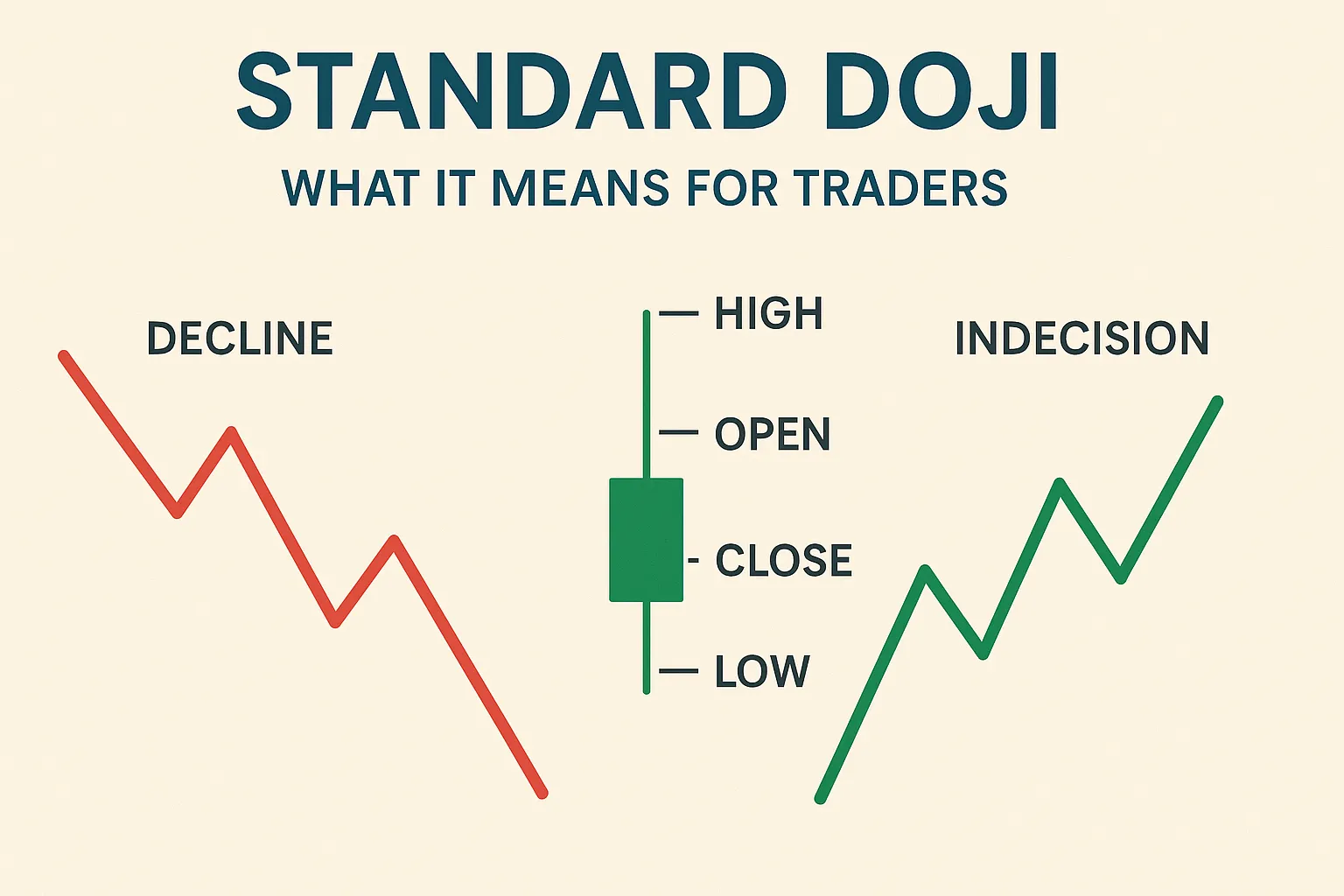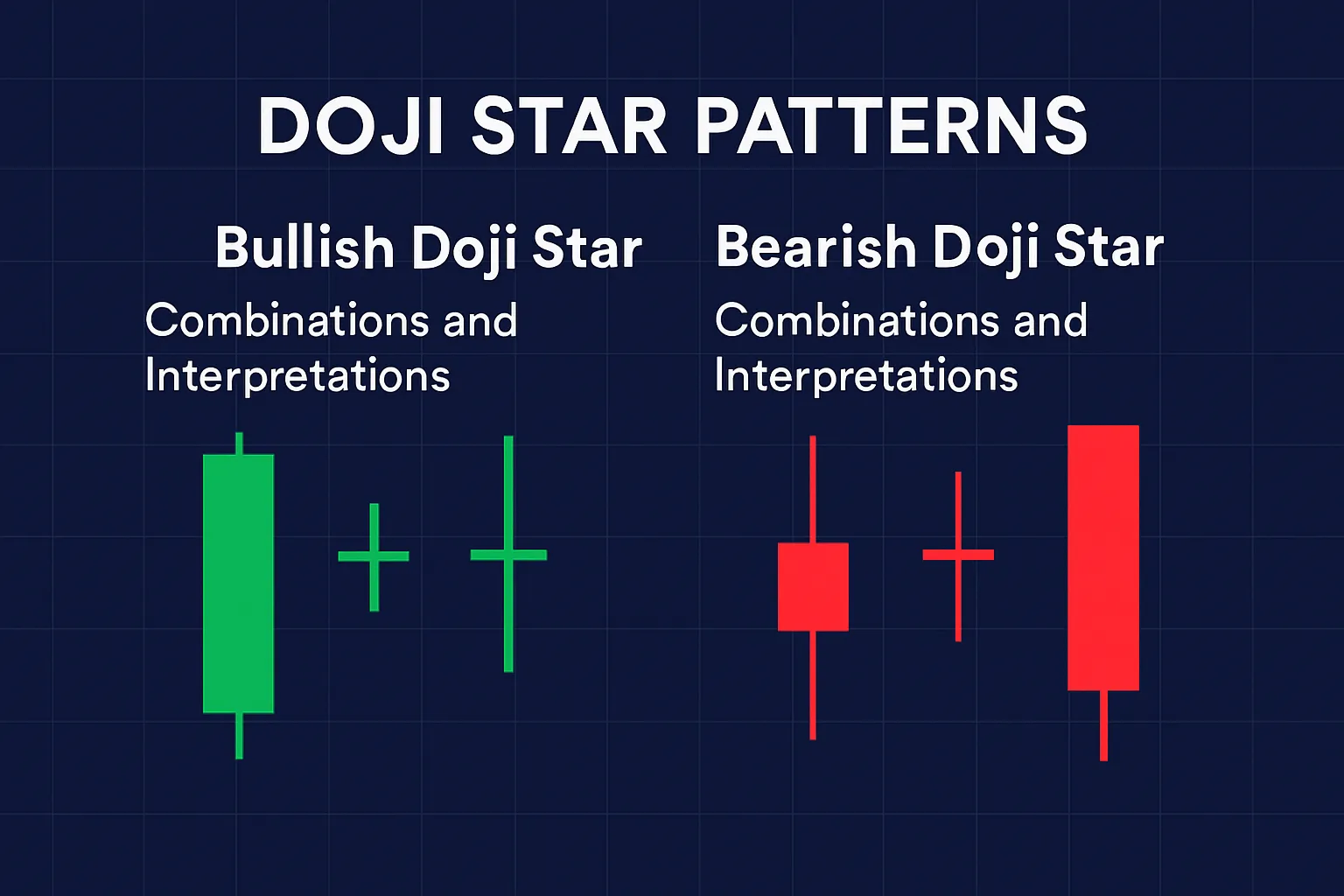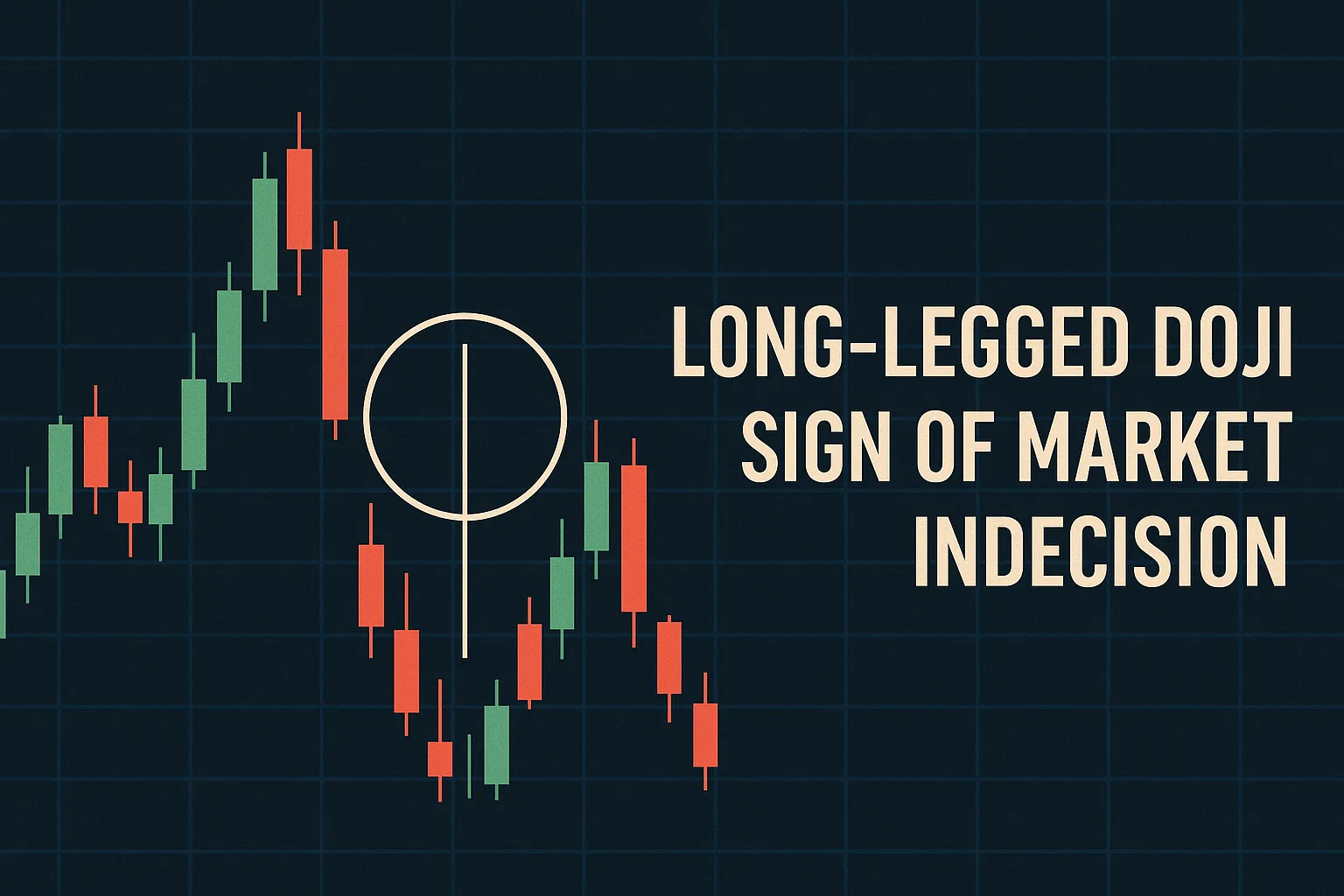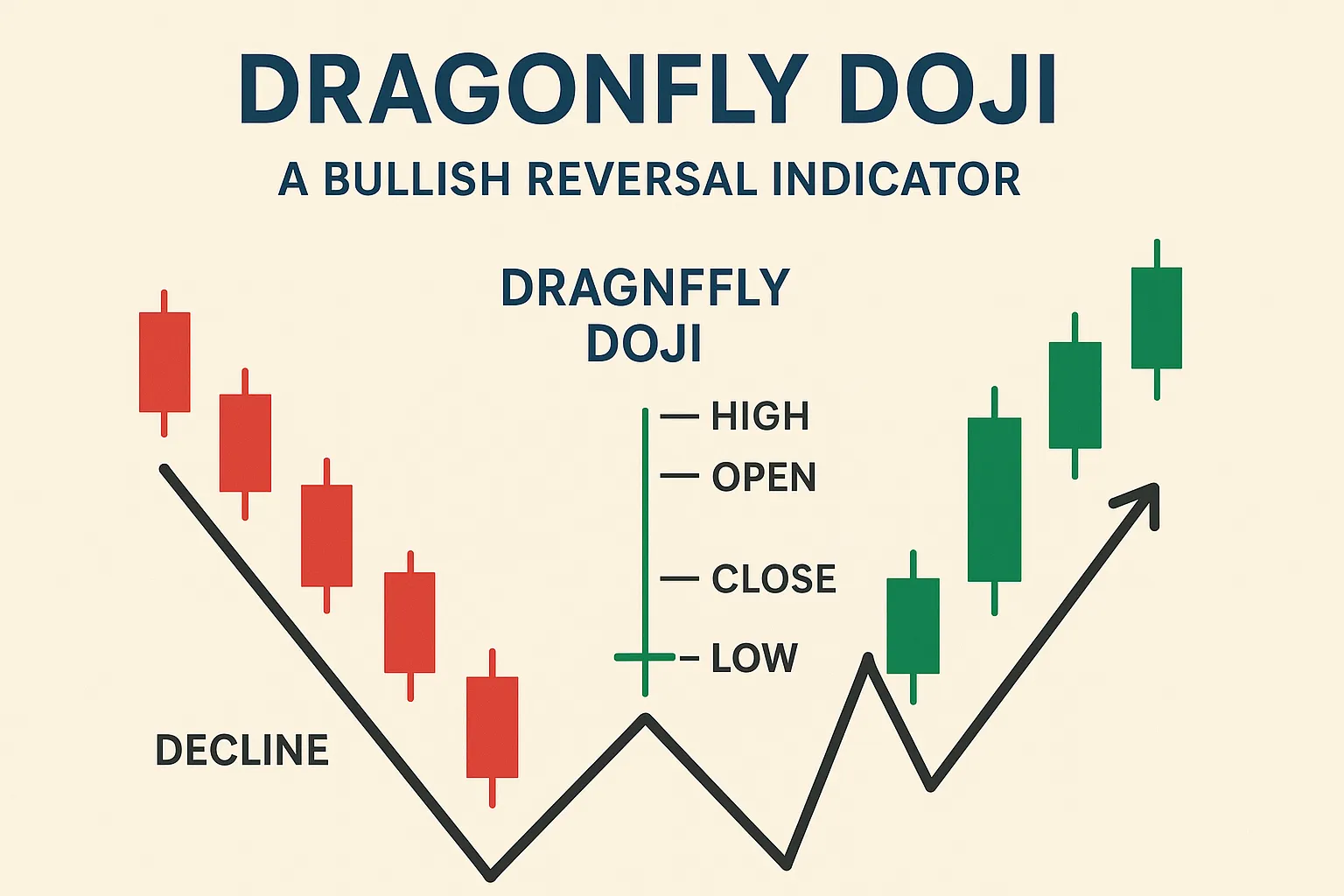Introduction: Standard Doji Candlestick Meaning
The Standard Doji candlestick is one of the most recognised patterns in technical analysis. It signals market indecision and can hint at a potential reversal or continuation, depending on the trend context. For traders, understanding how to interpret and react to a Standard Doji can enhance decision-making and risk management.
What is a Standard Doji Candlestick ?
- Appearance: Open and close prices are almost identical, forming a small or no body with short upper and lower shadows.
- Psychology: Buyers and sellers are evenly matched, leading to uncertainty in price direction.
- Signal: Indicates pause or hesitation in the current trend.
When Does It Appear?
- In the middle of a trend: Could signal a pause before continuation.
- At support/resistance: Might suggest a possible reversal.
- During low volume sessions, Reflects lack of commitment from both sides.
How to Trade the Standard Doji
- Analyse the Trend: The meaning depends on its position in the trend.
- After an uptrend: Possible bearish reversal.
- After a downtrend: Possible bullish reversal.
- Wait for Confirmation: A strong candle after the Doji provides direction.
- Entry Point: Trade after the confirmation candle breaks above or below the Doji.
- Stop-Loss: Set beyond the Doji’s high or low.
- Targets: Use support/resistance levels or standard risk-reward ratios.
When is the Standard Doji Most Useful?
- At key levels: It provides early warnings of potential trend shifts.
- With volume spikes: Adds credibility to its signal.
- Alongside other indicators: Enhances accuracy (e.g., RSI, MACD).
FAQs: Standard Doji Candlestick
1. Is the Standard Doji a reversal signal?
It can be, but it depends on the trend context. Always wait for confirmation.
2. Can I trade based on the Doji alone?
No. Doji represents indecision, not action. Confirmation is critical.
3. What’s the difference between Standard Doji and Long-Legged Doji?
- Standard Doji: Short wicks, less volatility.
- Long-Legged Doji: Long wicks, shows high volatility and indecision.
4. Which time frames are best?
Standard Doji is effective on 1-hour, 4-hour, and daily charts.
5. Does volume matter with Doji patterns?
Yes. A Doji with high volume is more likely to result in a significant move.
Conclusion
The Standard Doji is a vital pattern for traders to recognize neutral sentiment in the market. While it doesn’t guarantee a reversal, it offers a signal to pause, observe, and prepare for a possible shift. By combining Doji analysis with trend context and confirmation, traders can use it to sharpen their strategy.






